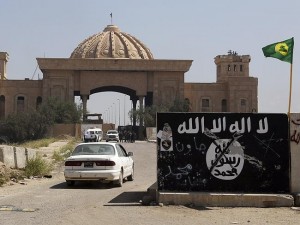
Iraqi dictator Saddam Hussein lives on in Islamic State
SADDAM Hussein’s legacy lives on in the senior ranks of the Islamic State, with his former top commanders leading the jihadist organisation.
The Iraqi dictator’s influence has made IS, also known as ISIS, more efficient and dangerous than would otherwise have been possible.
Ex-government officers now use their skills and knowledge of the terrain to ensure the extremist organisation operates with military precision.
While these mysterious figures control IS, high-profile foreign fighters act as its public face, distracting from these leaders by carrying out the group’s sickeningly violent acts of terror.
Those who have had contact with IS say almost all its general, emirs and princes are former Iraqi officers, the Washington Post reported.
A former IS fighter told the newspaper he took orders from Saddam’s ex-soldiers, and that even commanders in Syria had Iraqi deputies who made the real decisions.
Abu Hamza (of no connection to the radical preacher) said ex-government intelligence agents had brought their expertise to IS’s security service, and that smuggling networks developed in the 1990s are now used for IS oil trading.
“The Iraqi officers are in command, and they make the tactics and the battle plans,” he said, having left the group and fled to Turkey last year. “But the Iraqis themselves don’t fight. They put the foreign fighters on the front lines.”
When Saddam’s army was scattered after the 2003 invasion, 400,000 soldiers were banned from government employment, denied pensions, but allowed to keep their guns. Experts say it was almost inevitable that these Baathist officers would come to play a major role in IS.
“The manner in which Saddam was dispatched meant a vacuum was created,” Monash University terrorism expert Greg Barton told news.com.au. “These were the conditions for a perfect storm of insurgency.”
Saddam’s former commanders were treated with prejudice by Nouri al-Maliki, who was installed as prime minister in 2006. After Saddam’s downfall, he helped to lead the purge of ex-Baath party officials from the military and government and marginalise Sunni Muslims.
Iraq had been a predominantly Shi’ite country led by a Sunni minority, and many saw that as the natural order of things. With al-Maliki’s arrival, this changed, and IS tapped into a sense of aggrievement among Sunnis in the north of the country
The West was aware that Saddam’s disgruntled former officers were joining rebel groups and assisting al-Qaeda ten years ago, but failed to avert the crisis. Now it appears many completed a full transformation into jihadist leaders, as al-Qaeda became IS.
Saddam’s actions towards the end of his rule set the scene for IS, with more than 200 people beheaded in the final two years of his regime, mainly on suspicion of prostitution.
The nationalist Baath party had been forming branches across the Middle East and running training camps for foreign volunteers. Despite its secular roots, Saddam had begun moving towards a more religious approach, adding the words “God is great” to the Iraqi flag and ordering amputations for theft.
Read the full article here.





Leave a Reply